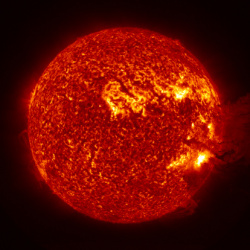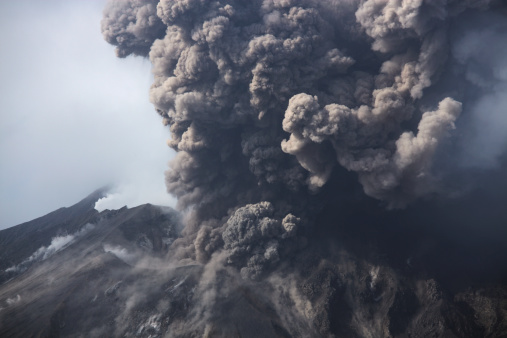Five Ways You Can Better Forecast Global Weather
If you work in aviation, you likely know The Weather Channel’s (TWC) personality line-up as well as you know the starters for your favorite sports team. For most, TWC is a great place to start planning for a U.S. trip that’s days out, or keeping on top of North American weather. But flying globally requires a longer and perhaps broader view of the weather. In addition to your favorite weather information sources: briefings; satellite images; METAR/TAF reports; winds aloft, icing, turbulence and precipitation forecasts; etc., you might consider adding these to your global weather forecasting resources:
Climatology—Are you making weather part of your long-term strategic plan? You rely on meteorologists to help you plan for a trip later today, tomorrow or next week. Today, a climatologist can help you plan weather for a trip you have in six, nine or twelve months. This Houston Chronicle Story provides a short distinction between the two. Wouldn’t you like weather specifics even though you’re four months away from a trip to a remote area during its rainy season? Or to know that, even though the trip is still a year away, upslope fog tends to close your destination airport during the time you want to land? How about having the ability to advise your passengers, while there’s still ample time, that postponing just a few days will ensure you’re not flying during seasonal winds that have become legend in a particular part of the world? A good climatologist can not only paint a vivid weather picture for you months, even a year, in advance of big trip, he or she can give you the gift of time and the power to plan in order to optimize every part of an upcoming global trip.

Space Weather—Space has atmospheric conditions that change just like the Earth’s weather. Solar flares and the Aurora Borealis (Northern Lights) are probably its most popular by-products. Especially when flying near the Poles, space weather can wreak havoc with your radio communications and power sources. In addition, the constellation of satellites that make onboard navigation, operation and communications such powerful tools are subject to whims of space weather—especially the sun. Changes in the atmosphere from things like solar flares, radiation and even temperature can impact satellite performance. Knowing when conditions are favorable for these types of outages or disruptions is an easy way to eliminate a potential complicating factor in any already complex global trip. Your favorite source for meteorological information should be keeping its eye on space weather. There are also a number of websites, including NOAA’s Space Weather Prediction Center, which can provide you ongoing space weather forecasting information.

Volcanic Ash—There are few things that can destroy an airplane like volcanic ash. Yet, a lot of global flight departments treat it like a skin rash. They don’t think about it until it flares up. By then, it’s too late. According to the USGS, there are about 1,500 volcanoes in the world, of which between 500 and 600 are active (depending on your source). The most active volcanoes are in the Pacific Ocean’s “Ring of Fire.” However, nearly everyone in aviation recalls how the April 2010 eruption of Iceland’s Eyjafjallajökull volcano created a sulfuric blanket over Europe. With active volcano activity in the Pacific and northern Atlantic Oceans, it’s worth getting a volcanic ash forecast when planning a trip across either water body. The only thing worse that having to turn back due to volcanic activity would be to be grounded away from home because of it. Like space weather, your trusted meteorological partner will be watching volcanic activity, either through their preferred volcanologists or seismologists, or through NOAA’s Volcanic Ash Advisory Offices, to advise you on any forecasted volcanic activity.

Tropical Storms—It doesn’t take a lot of hours in your logbook to figure out that flying in a hurricane or extreme tropical storm is a bad idea. But what about the one that isn’t front-page news? Maybe it’s not even a tropical storm, but more like a collection of thunderstorms. And, the odds of it falling apart may be just as good as it holding together. The boss wants to go, and since the weather isn’t the leadoff story on network news, you don’t feel like you have much choice. If you’re based in North America, you probably have a good sense for how a tropical storm creeps onto the Florida coast or up from the Gulf of Mexico. But how about the one headed for the coast of Japan or forming in the Mediterranean Sea? While the basic ingredients that form tropical storms are largely the same, how they combine differs depending on where you’re flying. Err on the side of caution for those questionable storm systems forming in unfamiliar parts of the world. NOAA’s Climate Prediction Center will you get a handle on global tropical storm activity around the world.
Microclimates—Some may view global weather the same way they do the long par five at their favorite golf course. They spend so much time worrying about the first 450 yards, the last yard to the hole is but an afterthought. But, looking small, really small, at weather can be as critical as the big picture. In short, microclimates are small areas where distinct weather patterns can form that may be different from surrounding areas. Winds, ocean currents, topography and other seemingly small factors can mean big changes in aviation weather. Your chart will show you that a field has the right runway length, ground handling services, and easy access to the final destination. What it might not show you is that the mountain valley it sits in is slammed with upslope fog almost daily during your landing slot. Or, that nearly every afternoon about 16:30, thunderstorms render the airport essentially useless for about 90 minutes. Taking a minute to understand the microclimates of the airports you’re planning to use (destination and alternate) will help you ensure that the last four miles of your trip go as smoothly as the previous four thousand.
Nothing creates more doubt, changes more flight plans or grounds more aircraft than weather. It’s the most dynamic force on the planet and should never be underestimated. When you fly globally, weather impact and unpredictability grow exponentially. The weather professionals with Jeppesen’s International Trip Planning Service (ITPS) are the best in the business. We not only understand the nuances of global weather forecasting, we have access to even the most hard-to-get weather information and appreciate the money and time that are saved with an accurate weather prediction. The next time you’re trying to forecast global weather for an upcoming trip, let Jeppesen’s ITPS meteorologists help. Learn more about how we can offer a second opinion, or forecast and plan your next trip, by clicking here or calling (800) 553-7750.
If you work in aviation, you likely know The Weather Channel’s (TWC) personality line-up as well as you know the starters for your favorite sports team. For most, TWC is a great place to start planning for a U.S. trip that’s days out, or keeping on top of North American weather. But flying globally requires a longer and perhaps broader view of the weather. In addition to your favorite weather information sources: briefings; satellite images; METAR/TAF reports; winds aloft, icing, turbulence and precipitation forecasts; etc., you might consider adding these to your global weather forecasting resources:
Climatology—Are you making weather part of your long-term strategic plan? You rely on meteorologists to help you plan for a trip later today, tomorrow or next week. Today, a climatologist can help you plan weather for a trip you have in six, nine or twelve months. This Houston Chronicle Story provides a short distinction between the two. Wouldn’t you like weather specifics even though you’re four months away from a trip to a remote area during its rainy season? Or to know that, even though the trip is still a year away, upslope fog tends to close your destination airport during the time you want to land? How about having the ability to advise your passengers, while there’s still ample time, that postponing just a few days will ensure you’re not flying during seasonal winds that have become legend in a particular part of the world? A good climatologist can not only paint a vivid weather picture for you months, even a year, in advance of big trip, he or she can give you the gift of time and the power to plan in order to optimize every part of an upcoming global trip.

Space Weather—Space has atmospheric conditions that change just like the Earth’s weather. Solar flares and the Aurora Borealis (Northern Lights) are probably its most popular by-products. Especially when flying near the Poles, space weather can wreak havoc with your radio communications and power sources. In addition, the constellation of satellites that make onboard navigation, operation and communications such powerful tools are subject to whims of space weather—especially the sun. Changes in the atmosphere from things like solar flares, radiation and even temperature can impact satellite performance. Knowing when conditions are favorable for these types of outages or disruptions is an easy way to eliminate a potential complicating factor in any already complex global trip. Your favorite source for meteorological information should be keeping its eye on space weather. There are also a number of websites, including NOAA’s Space Weather Prediction Center, which can provide you ongoing space weather forecasting information.

Volcanic Ash—There are few things that can destroy an airplane like volcanic ash. Yet, a lot of global flight departments treat it like a skin rash. They don’t think about it until it flares up. By then, it’s too late. According to the USGS, there are about 1,500 volcanoes in the world, of which between 500 and 600 are active (depending on your source). The most active volcanoes are in the Pacific Ocean’s “Ring of Fire.” However, nearly everyone in aviation recalls how the April 2010 eruption of Iceland’s Eyjafjallajökull volcano created a sulfuric blanket over Europe. With active volcano activity in the Pacific and northern Atlantic Oceans, it’s worth getting a volcanic ash forecast when planning a trip across either water body. The only thing worse that having to turn back due to volcanic activity would be to be grounded away from home because of it. Like space weather, your trusted meteorological partner will be watching volcanic activity, either through their preferred volcanologists or seismologists, or through NOAA’s Volcanic Ash Advisory Offices, to advise you on any forecasted volcanic activity.

Tropical Storms—It doesn’t take a lot of hours in your logbook to figure out that flying in a hurricane or extreme tropical storm is a bad idea. But what about the one that isn’t front-page news? Maybe it’s not even a tropical storm, but more like a collection of thunderstorms. And, the odds of it falling apart may be just as good as it holding together. The boss wants to go, and since the weather isn’t the leadoff story on network news, you don’t feel like you have much choice. If you’re based in North America, you probably have a good sense for how a tropical storm creeps onto the Florida coast or up from the Gulf of Mexico. But how about the one headed for the coast of Japan or forming in the Mediterranean Sea? While the basic ingredients that form tropical storms are largely the same, how they combine differs depending on where you’re flying. Err on the side of caution for those questionable storm systems forming in unfamiliar parts of the world. NOAA’s Climate Prediction Center will you get a handle on global tropical storm activity around the world.
Microclimates—Some may view global weather the same way they do the long par five at their favorite golf course. They spend so much time worrying about the first 450 yards, the last yard to the hole is but an afterthought. But, looking small, really small, at weather can be as critical as the big picture. In short, microclimates are small areas where distinct weather patterns can form that may be different from surrounding areas. Winds, ocean currents, topography and other seemingly small factors can mean big changes in aviation weather. Your chart will show you that a field has the right runway length, ground handling services, and easy access to the final destination. What it might not show you is that the mountain valley it sits in is slammed with upslope fog almost daily during your landing slot. Or, that nearly every afternoon about 16:30, thunderstorms render the airport essentially useless for about 90 minutes. Taking a minute to understand the microclimates of the airports you’re planning to use (destination and alternate) will help you ensure that the last four miles of your trip go as smoothly as the previous four thousand.
Nothing creates more doubt, changes more flight plans or grounds more aircraft than weather. It’s the most dynamic force on the planet and should never be underestimated. When you fly globally, weather impact and unpredictability grow exponentially. The weather professionals with Jeppesen’s International Trip Planning Service (ITPS) are the best in the business. We not only understand the nuances of global weather forecasting, we have access to even the most hard-to-get weather information and appreciate the money and time that are saved with an accurate weather prediction. The next time you’re trying to forecast global weather for an upcoming trip, let Jeppesen’s ITPS meteorologists help. Learn more about how we can offer a second opinion, or forecast and plan your next trip, by clicking here or calling (800) 553-7750.